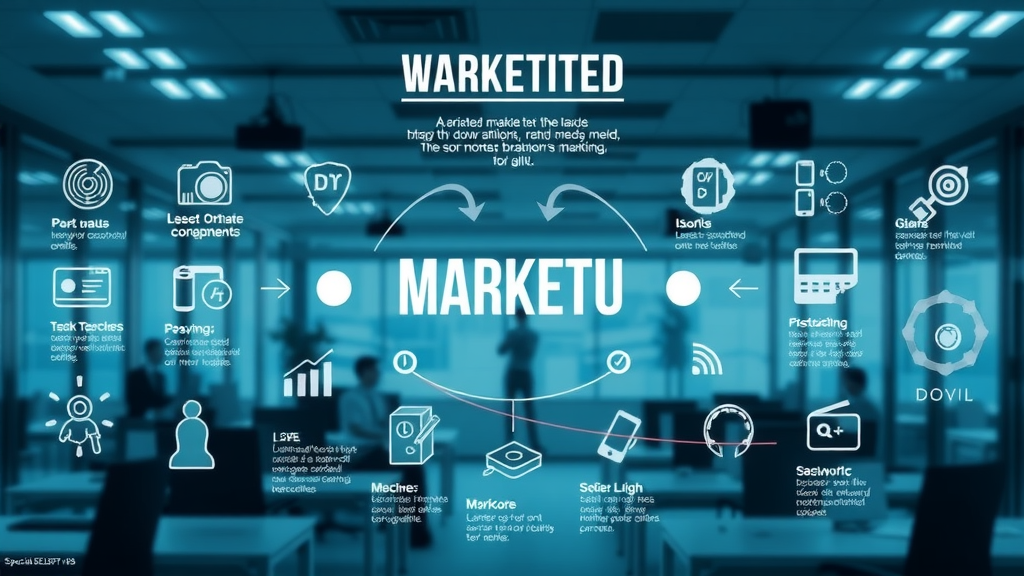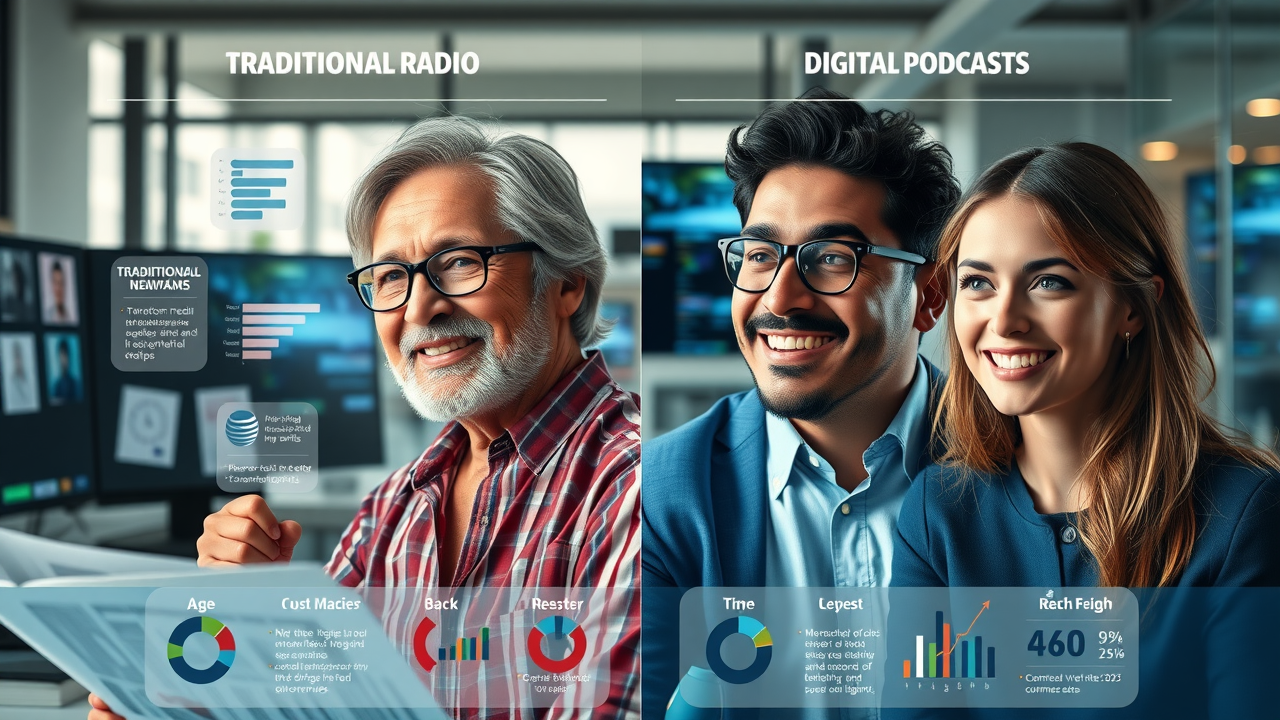"Over 75% of companies attribute their growth to a well-executed media channel strategy—are you maximizing your channels to their full potential?"
- Gain insight into effective media channel strategy frameworks
- Discover actionable steps to enhance your marketing channel performance
- Learn how multi-channel integration drives successful marketing in today's landscape

What You’ll Learn: This guide reveals everything you need to know about creating a winning media channel strategy. From foundational concepts through real-life case studies and actionable steps, you’ll discover how to choose the best marketing channels, integrate digital with traditional approaches, measure your success, and optimize your efforts for maximum impact.
Understanding the Foundation of a Media Channel Strategy
- Definition and core concepts of media channel strategy and marketing channel strategy
- Differences between media channel strategy, marketing channel, and channel marketing
- The importance of aligning channel strategy with marketing efforts
At its core, a media channel strategy is the blueprint guiding how your brand communicates with potential customers through various platforms—digital, traditional, or both. Unlike a simple marketing channel, which focuses on how your product reaches users, a media channel strategy is about crafting the right message and delivering it where your target audience spends their time. It integrates channel marketing to ensure your marketing efforts resonate across all touchpoints.
Distinguishing between media channel strategy , marketing channel , and channel marketing is important for modern marketers. While a marketing channel refers mainly to paths products travel (such as retailers or e-commerce), channel marketing centers on strategies and campaigns for each channel, and media channel strategy encompasses the holistic approach—planning, execution, measurement, and realignment. Aligning all three ensures you don’t waste resources on poorly performing platforms, and that each effort supports your primary marketing strategy .
Effective channel strategy is about creating synergy between what you offer, where you promote it, and how you engage your audience. In today's cluttered media landscape, the brands that win are those who truly align their marketing efforts across multiple channels —owned, earned, paid, and shared. This approach helps build strong brand awareness and delivers consistent results throughout your entire marketing channel strategy .
| Channel Type | Definition | Example |
|---|---|---|
| Owned | Channels you control directly | Email marketing, company website, branded app |
| Earned | PR and organic reach not paid for | Social media shares, media coverage, testimonials |
| Paid | Channels where you pay to reach audience | Search engine ads, paid social media campaigns, display ads, paid ad placements |
| Shared | Collaborative content distribution | Co-branded campaigns, influencer partnerships on social media platforms |

Identifying the Right Marketing Channel for Your Target Audience
- The role of target audience analysis in crafting a channel strategy
- Evaluating current marketing channels for audience alignment
- Using analytics to refine your media channel strategy
Success in any media channel strategy starts with understanding your target audience . This means using data-driven insights to determine where your potential customers spend time, how they consume content, and what motivates their decisions. Audience analysis tools and marketing analytics uncover which platforms—such as specific social media or digital channels —will yield the best engagement and return.
Evaluate your current marketing channels by mapping touchpoints where your ideal target market interacts with your brand. Tools like Google Analytics, social listening platforms, and customer surveys help clarify which marketing channel strategies perform well, and which underperform. By continually refining your channel strategy as new data emerges, you gain a competitive edge and speak directly to your audience’s needs, not just your own business goals.
"Selecting the right marketing channel is less about where your brand wants to be, and more about where your customers are."
A well-refined media channel strategy is dynamic and iterative. Using analytics to monitor engagement, you can adapt your content marketing and paid ad efforts to better suit audience preferences. Look for shifts in behavior across social media platforms , opens in email marketing campaigns, or spikes in search engine queries. This continual refinement is crucial for maximizing the impact of every marketing effort .
As you refine your approach, it’s also valuable to understand the core definition and evolving role of media channels in today’s landscape. For a deeper dive into what constitutes a media channel and how to unlock its full potential, explore this comprehensive guide on media channels .

Key Elements of an Effective Media Channel Strategy
- Strategic objectives for your media channel strategy
- Leveraging multiple channels for brand awareness
- Creating consistency across digital channels and traditional marketing efforts
- Measuring the impact of each marketing channel strategy
Every media channel strategy must start with clear strategic objectives. Are you aiming for greater brand awareness , lead generation, or product sales? From there, leverage multiple channels —like social media , content marketing, email marketing , and even direct mail —to reach customers at every stage of their journey.
Consistency across channels is key. Whether customers find you through a social media campaign , a search engine result, or a digital ad , they need to experience a cohesive message and branding. Connecting traditional efforts (like print) with digital channels boosts your credibility and allows for sustained engagement.
Measuring your marketing channel strategy ’s effectiveness requires tracking KPIs such as reach, engagement, click-through rates, and ROI. Robust measurement not only shows which channels drive the best results, but also uncovers where synergy exists between online and offline campaigns. Armed with this data, you can adjust your channel strategies for increased impact and smarter marketing spend.
Building Your Channel Marketing Strategy: Step-By-Step Guide
- Step 1: Conduct an audit of your current marketing efforts
- Step 2: Prioritize channels based on target audience and objectives
- Step 3: Develop content tailored to each marketing channel
- Step 4: Coordinate campaigns for unified brand messaging
- Step 5: Benchmark performance and optimize your channel strategies
Creating a channel marketing strategy involves detailed assessment and planning. Step one is auditing your existing marketing efforts —reviewing which channels deliver results, and which underperform. Use this data to prioritize where to focus energy and budget, aligning each channel’s strengths with your target audience and business goals.
Next, tailor content to each marketing channel . What works for a visual social media platform like Instagram may not translate to a long-form blog or email marketing newsletter. Unified messaging should resonate with your audience, maintaining consistency but adapting voice and visuals to fit the medium.
Once campaigns are launched, coordinate your efforts for seamless branding across both digital channels and traditional outlets. Use integrated tools to benchmark performance—measuring reach, lead generation, and customer acquisition for each media channel strategy . From there, optimize iteratively, reallocating resources as data points to successful marketing channels and phasing out what doesn’t work.
Channel Marketing Best Practices
- Tips for effective channel selection, management, and iteration
- Examples of successful channel marketing strategies in B2B and B2C sectors
To select effective channels , use a mix of qualitative insights (customer interviews, feedback) and quantitative metrics (traffic, click-through rates). Select fewer channels initially and do them well, expanding as you acquire data. Regularly monitor performance and adjust your strategy based on ROI, engagement, and alignment with marketing strategy objectives.
For example, a B2C direct-to-consumer skincare brand may combine social media influencer partnerships, interactive content marketing , and automated email marketing drip campaigns for product launches. In B2B, channel marketing often includes LinkedIn networking, industry webinars, and content syndication. Adaptation is the constant; the best channel strategies are those refined through real-world feedback and results.

"A successful marketing channel strategy isn’t static—optimization and adaptation are ongoing processes."
Case Studies: Successful Marketing Channel Strategies in Action
- Case Study 1: Brand X’s omni-channel strategy for boosting sales
- Case Study 2: Leveraging digital channel integration for increased engagement
Brand X , a global retail company, implemented an omni-channel marketing channel strategy integrating online and offline shopping experiences. Combining in-store promotions with social media campaigns and influencer marketing, they created a seamless journey where customers could engage and shop from any media platform . This approach doubled their conversion rate, expanded brand awareness , and boosted customer retention in a competitive market.
Another example comes from a fast-growing B2B software provider. By merging webinars, LinkedIn digital channel advertising, and targeted email marketing , they nurtured prospects through multiple touchpoints throughout the buyer’s journey. This full-funnel strategy resulted in a 40% lift in qualified leads and longer-lasting relationships, proving that a coordinated media channel strategy drives consistent growth.
| Channel | ROI | Reach | Engagement |
|---|---|---|---|
| Social Media | High | Very High | High |
| Email Marketing | Very High | Medium | Medium |
| Search Engine Ads | Medium | High | Low-Medium |
| Direct Mail | Medium | Low | Medium |
| Content Marketing (Blogs, Webinars) | High | Medium | Very High |

Choosing the Best Digital Channels for Your Media Channel Strategy
- Critical roles of social media, email marketing, and other digital channels in a modern media channel strategy
- Recognizing when to use traditional channels vs. digital channels
Today’s successful marketing programs almost always involve a mix of digital channels — social media , email marketing , search engine ads, and content syndication. Social media platforms like Facebook, Instagram, and LinkedIn are especially powerful for fostering community, spreading awareness, and sparking conversations with your target audience .
Email marketing remains one of the highest ROI tactics, providing direct, personalized communication with customers. Other top digital channel options include influencer collaborations, digital PR, and paid search, each targeting specific buyer stages. Understanding when to deploy traditional channels—like direct mail for special promotions or events—ensures no segment of the target market is left untapped.

Aligning Marketing Strategy and Marketing Efforts Across Channels
- Bridging marketing strategy with day-to-day channel marketing campaigns
- Creating workflows for cohesive marketing efforts across all channels
To ensure success, bridge your high-level marketing strategy with everyday marketing efforts on each channel. This means clarity around objectives, brand voice, campaign timing, and tactical execution across every point of interaction—offline and online.
Develop clear workflows and collaboration between teams responsible for channel marketing , creative, and analytics. Use project management and marketing automation tools to synchronize your activities, making it easy to maintain a unified brand experience for customers interacting across multiple channels .
Managing Multiple Channels for Consistent Brand Messaging
- Tools and software solutions for tracking channel performance
- Avoiding pitfalls of fragmented messaging
Managing multiple channels is a balancing act. Use integrated platforms for campaign management and analytics, ensuring you avoid fragmented customer experiences. Centralize your brand assets and campaign templates, and standardize reporting so you can quickly act on lagging performance or misaligned messages.
Even as you differentiate content for each media platform , your core messaging and brand tone should remain familiar. This helps strengthen brand awareness and builds trust with both new and existing customers as they move between marketing channels .

Maximizing Brand Awareness Through Social Media and Email Marketing
- Role of social media in amplifying your media channel strategy
- Email marketing techniques for nurturing leads and increasing retention
- Synergizing social media and email for powerful marketing efforts
Social media serves as a powerful amplifier within any media channel strategy . It enables brands to rapidly share content, respond to feedback, and spark dialogue with their target audience . When used together with email marketing —known for its high engagement and retention—you create a multi-touch journey that strengthens every phase of the customer lifecycle.
To nurture leads, employ segmented email marketing campaigns tailored by demographics or past interactions. Personalization increases open rates and conversions, making each marketing effort more efficient. Cross-promote between channels by inviting social followers to join your email list and featuring top-performing content or offers from emails on your social media platform .
"Integrated campaigns across social media, email, and digital channels drive up to 35% higher engagement rates."
The synergy between social and email is unmatched for building brand awareness , nurturing potential customers , and deepening loyalty. Use automations and content calendars to align messaging, ensuring every marketing channel strategy supports the next.
Evaluating and Optimizing Your Marketing Channel Strategy
- Key KPIs and metrics for channel strategy success
- Continuous improvement cycles for marketing channel strategy
Measuring the effectiveness of your media channel strategy is essential. Track KPIs including conversion rates, reach, engagement, customer acquisition cost, and ROI for each channel. Use dashboards for at-a-glance views of performance, spotting trends and opportunities for growth.
Adopt a continuous improvement cycle: Plan, execute, measure, optimize. This process keeps your marketing channel strategy resilient amid changing market conditions, new technologies, and evolving consumer behaviors. Even perfect campaigns benefit from refinement—keeping your channel strategies at the forefront of successful marketing .
| Metric | Social Media | Email Marketing | Search Engine Ads |
|---|---|---|---|
| ROI (%) | 350 | 440 | 210 |
| Engagement Rate (%) | 9.6 | 7.2 | 2.3 |
| Reach (Impressions/mo) | 1,200,000 | 75,000 | 500,000 |

People Also Ask: What is an example of a channel strategy?
- Channel strategy example: A retail brand uses a blend of in-store promotions, social media campaigns , and influencer partnerships to boost sales and expand its market reach. By unifying these touchpoints through consistent messaging, the brand increases customer loyalty and drives measurable performance across marketing channels .
People Also Ask: What are the 5 M's of media strategy?
-
The 5 M’s: Mission, Money, Message, Media, and Measurement. Each aspect informs your wider media channel strategy and marketing efforts :
- Mission: What’s the objective?
- Money: What is the budget?
- Message: What do you want to say?
- Media: Where will it be seen?
- Measurement: How will success be tracked?
People Also Ask: What are the 6 C's of channel strategy?
- 6 C’s: Coverage, Cost, Control, Conflict, Cooperation, Capability. These criteria help shape your optimal marketing channel strategy by assessing how each channel delivers value, scalability, and manageability for your business.
People Also Ask: What is an example of media strategy?
- Media strategy example: A B2B SaaS company leverages webinars, LinkedIn advertising, and content syndication to build authority and generate leads via digital channels . By integrating touchpoints and using analytics, they attract new clients while nurturing long-term relationships with existing ones.
Frequently Asked Questions
-
How often should a media channel strategy be updated?
Regular reviews are vital. Update your media channel strategy quarterly or whenever there’s a major shift in audience behavior, new platforms, or evolving business goals. -
What’s the difference between multichannel and omnichannel marketing channel strategies?
Multichannel means using several channels independently, while omnichannel integrates all touchpoints for a seamless, consistent customer experience. -
How do small businesses implement cost-effective channel marketing strategies?
Focus on a few key marketing channels where your target audience spends time, use free or low-cost tools, and test to identify what provides the best ROI. -
What tools help streamline channel marketing efforts?
Platforms like HubSpot, Hootsuite, and Google Analytics help you manage campaigns, track performance, and optimize your marketing efforts across all channels.
Key Takeaways for Building a Winning Media Channel Strategy
- Align your marketing strategy with the right marketing channels for your target audience
- Use data and analytics to continually optimize your media channel strategy
- Embrace multi-channel integration and coordinate campaigns for consistent brand awareness
- Track performance, adapt quickly, and never stop refining your channel marketing strategy
"Your media channel strategy is the backbone of your brand’s growth—start building your winning formula today."
Start building your winning media channel strategy today and transform the way your brand connects with the world.
If you’re ready to take your strategy to the next level, consider the long-term advantages of owning your own media channel rather than relying solely on rented platforms. Discover why small business owners are shifting toward media ownership and how this approach can help you build lasting authority and control over your audience relationships in this in-depth article on media channel ownership . By exploring advanced strategies and real-world examples, you’ll gain the insight needed to future-proof your marketing and unlock new growth opportunities.
To deepen your understanding of media channel strategies, consider exploring the following resources:
-
“How to Create Effective Media Strategies for Your Marketing” : This article outlines eight key steps to develop media strategies that resonate with your target audience and drive results, including defining objectives, understanding your audience, and choosing the right media channels. ( adaglobal.com )
-
“PESO Model” : This framework categorizes media into Paid, Earned, Shared, and Owned channels, providing a comprehensive approach to integrating different media types into your marketing strategy. ( en.wikipedia.org )
If you’re serious about building a robust media channel strategy, these resources will offer valuable insights and practical steps to enhance your marketing efforts.
 Add Row
Add Row  Add
Add 




Write A Comment